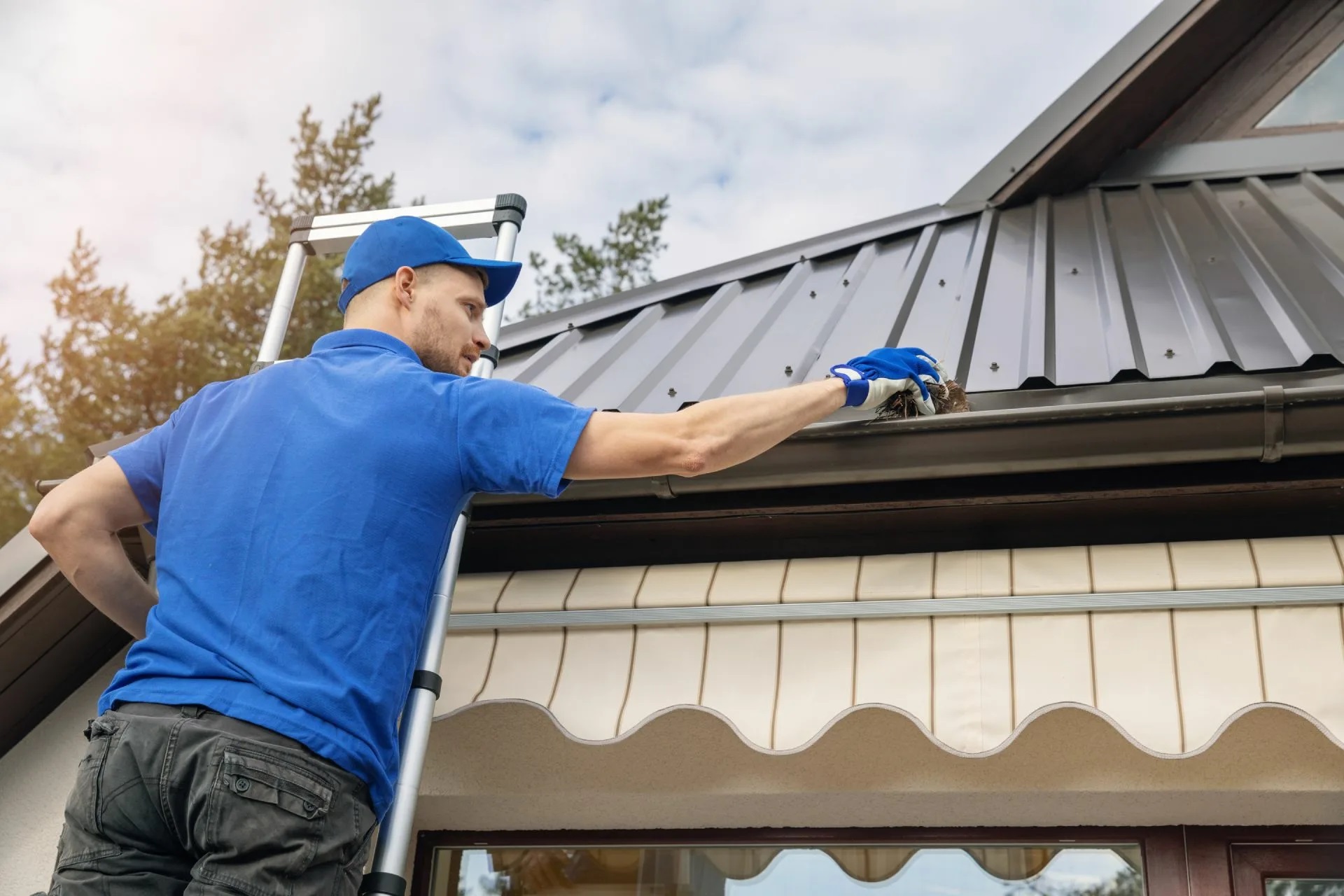When it comes to maintaining your home, the roof plays a critical role in keeping your home safe from the elements. Over time, roofs experience wear and tear from weather, aging materials, and unforeseen damage like fallen tree branches. Many homeowners wonder whether they can repair only parts of their roof or if a full roof replacement is necessary. The good news is that in many cases, you can repair parts of your roof without needing to replace the entire structure. In this blog, we’ll explore which parts of a roof can be repaired, how to go about it, and when a roofing Repair in Frisco TX is the best option versus a replacement.
1. Understanding the Different Parts of a Roof
Before diving into which parts can be repaired, it’s essential to understand the structure of a roof. Here are the primary components that often require maintenance or repair:
- Shingles: These are the outermost layer of the roof and come in various materials such as asphalt, wood, metal, or slate.
- Flashing: Metal strips placed around roof joints, chimneys, vents, and skylights to prevent water from seeping into the roof structure.
- Fascia: The board that runs along the edge of the roof, often supporting the gutter system.
- Soffit: The underside of the roof’s overhang, helping with attic ventilation.
- Gutters: A drainage system that directs rainwater away from the roof and foundation.
- Underlayment: A water-resistant or waterproof barrier installed under the shingles to protect the roof deck.
Each of these components can experience damage or wear and can often be repaired individually, depending on the severity of the issue.
2. Can You Repair Shingles?
Yes, shingles can be repaired.
Shingles are the most common part of a roof that requires repair. Over time, they may crack, curl, or go missing due to wind, rain, or debris. Luckily, individual shingles can be replaced without impacting the entire roof.
How to Repair or Replace Damaged Shingles:
- Step 1: Identify which shingles are damaged by doing a thorough visual inspection.
- Step 2: Use a pry bar to lift the surrounding shingles gently. Remove the nails that hold the damaged shingle in place.
- Step 3: Slide a new shingle into the vacant spot and secure it with roofing nails.
- Step 4: Apply roofing cement to the edges of the new shingle to seal it in place and ensure water resistance.
This type of localized repair can extend the life of your roof and prevent further damage from occurring.
3. Can You Repair Roof Flashing?
Yes, flashing can be repaired.
Flashing is essential for preventing leaks where different parts of your roof meet, such as around chimneys, skylights, and vents. Over time, flashing may become loose, rusted, or damaged, leading to leaks in your home. Repairing flashing can save you from costly water damage.
How to Repair Roof Flashing:
- Step 1: Remove any old or damaged flashing by loosening the nails or sealant holding it in place.
- Step 2: Clean the area around the vent, chimney, or roof joint to remove debris.
- Step 3: Install new flashing, ensuring it fits snugly around the affected area.
- Step 4: Secure the new flashing with nails and apply roofing cement to seal any gaps and ensure a watertight seal.
Properly repaired flashing can prevent further leaks and extend the life of your roof.
4. Can You Repair Fascia and Soffit?
Yes, both fascia and soffit can be repaired.
Fascia and soffit are crucial for the structural support of your roof and for attic ventilation. Over time, they may rot, warp, or suffer damage from water or pests.
How to Repair Fascia:
- Step 1: Remove the damaged section of the fascia board using a pry bar or saw.
- Step 2: Measure and cut a new piece of wood to match the dimensions of the old fascia.
- Step 3: Secure the new fascia board with nails and paint or seal it to match the rest of the roof.
How to Repair Soffit:
- Step 1: Remove the damaged section of the soffit using a saw or utility knife.
- Step 2: Replace it with new soffit material, ensuring it matches the ventilation system in place.
- Step 3: Attach the new soffit securely with nails and ensure it’s properly sealed to prevent pests or water infiltration.
Repairing damaged fascia and soffit can help maintain the structural integrity of your roof and improve your home’s overall appearance.
5. Can You Repair Gutters? repair parts of a roof
Yes, gutters can be repaired.
Gutters play a crucial role in directing water away from your roof and home’s foundation. If your gutters are damaged or clogged, water can pool on the roof, leading to leaks and damage.
How to Repair Gutters:
- Step 1: Clean the gutters of debris, such as leaves, twigs, and dirt, to ensure water flows freely.
- Step 2: Check for any cracks, holes, or loose sections. Small holes can be sealed with gutter sealant, while loose sections can be secured with screws or brackets.
- Step 3: For more severe damage, such as large cracks or significant rust, consider replacing sections of the gutter with new materials.
Maintaining and repairing your gutters can prevent water damage to both your roof and the foundation of your home.
6. Should You Repair or Replace the Roof?
There are times when repairing parts of the roof is a practical and cost-effective solution, and there are times when a full replacement may be necessary. Here’s a guide to help you decide:
- Repair the Roof if:
- The damage is localized (e.g., only a few shingles are missing or a small area is leaking).
- The roof is relatively new (under 10 years old) and the rest of the roof is in good condition.
- Your budget doesn’t allow for a full roof replacement at the moment.
- Replace the Roof if:
- The damage is widespread or affects multiple areas of the roof.
- The roof is old (20+ years) and nearing the end of its lifespan.
- You’re experiencing frequent leaks, sagging, or structural damage.
- The roofing material (such as wood or slate) is in poor condition overall.
7. When to Call a Professional for Roof Repairs
While some roof repairs can be handled by handy homeowners, there are instances where it’s better to call a professional roofing contractor:
- Extensive Damage: If a large portion of the roof is damaged, it’s safer and more cost-effective to hire a professional.
- Steep Roofs: Roofs with a steep pitch are more dangerous to work on and require specialized safety equipment.
- Complex Repairs: If flashing around chimneys, skylights, or vents is damaged extensively, a professional can ensure it’s repaired correctly and to code.
Conclusion
Best Roofing Company in Texas Yes, you can repair parts of a roof! In many cases, minor damage such as missing shingles, damaged flashing, or worn-out gutters can be repaired without needing to replace the entire roof. Regular maintenance and timely repairs can extend the life of your roof and save you from costly future repairs or replacements. However, it’s crucial to assess the extent of the damage and know when it’s time to call a professional. By addressing roofing issues early, you’ll protect your home from water damage and other structural concerns, ensuring your roof continues to perform for years to come.
SPARKLINE CO. Handcrafted Diya Shape Flower Decorative Urli Bowl for Home Perfect for Floating Flowers and Tea Light Candles Ideal Home and Table Decor Diwali Decoration Items Potpourri Bowl
₹310.00 (as of 16 October, 2024 18:16 GMT +05:30 - More infoProduct prices and availability are accurate as of the date/time indicated and are subject to change. Any price and availability information displayed on [relevant Amazon Site(s), as applicable] at the time of purchase will apply to the purchase of this product.)2 Pcs Kitchen Mats, Waterproof Memory Foam Kitchen Rugs, Standing Desk Mat Floor Mats, Comfort Runner Rug Carpets for Kitchen Floor, Sink (c)
₹549.00 (as of 16 October, 2024 18:16 GMT +05:30 - More infoProduct prices and availability are accurate as of the date/time indicated and are subject to change. Any price and availability information displayed on [relevant Amazon Site(s), as applicable] at the time of purchase will apply to the purchase of this product.)ATOM Digital Kitchen Food Weighing Scale For Healthy Living, Home Baking, Cooking, Fitness & Balanced Diet. | 1 Year Warranty | 10Kg x 1gms with 2 Batteries Included, SF400/A121, Color May vary
₹189.00 (as of 16 October, 2024 18:16 GMT +05:30 - More infoProduct prices and availability are accurate as of the date/time indicated and are subject to change. Any price and availability information displayed on [relevant Amazon Site(s), as applicable] at the time of purchase will apply to the purchase of this product.)PROSPERRO LUMO by Parkash Candles Paraffin Wax Candles Tea Light, 3 hr Burn time, No Residue Diwali Decoration,Smokeless, (100 PC Unscented)
₹259.00 (as of 16 October, 2024 18:16 GMT +05:30 - More infoProduct prices and availability are accurate as of the date/time indicated and are subject to change. Any price and availability information displayed on [relevant Amazon Site(s), as applicable] at the time of purchase will apply to the purchase of this product.)RILION 6 fridge storage boxes multipurpose containers for storage Space-saving Refrigerator Side Door Organizer for fridge kitchen Fruits, Vegetables Storage Containers- transparent
₹164.00 (as of 16 October, 2024 18:16 GMT +05:30 - More infoProduct prices and availability are accurate as of the date/time indicated and are subject to change. Any price and availability information displayed on [relevant Amazon Site(s), as applicable] at the time of purchase will apply to the purchase of this product.)Discover more from The General Post
Subscribe to get the latest posts sent to your email.





